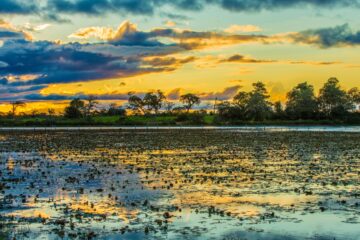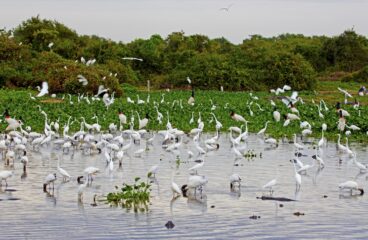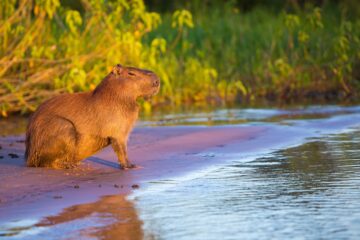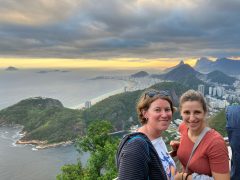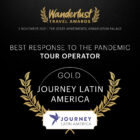Overview
Slap in the centre of Brazil is the world’s largest wetland, a mix of wilderness and cattle ranches with savannah, swamps and sluggish rivers. Just one road (the Transpantaneira) leads into the heart of the region, giving access to farms and eco-lodges.
You could spend a week or more in the Pantanal but 3-4 days can provide a memorable experience of its remarkable wildlife and inexplicable beauty. Stands of trees are scattered, so that the huge array of wildlife: birds from giant storks to macaws, mammals from capybara to anteaters and reptiles from caimans to anacondas are easily viewed by nature enthusiasts exploring by boat, on foot and on horseback. Flooding after the rains brings vast lagoons reflecting apricot sunsets; the dry season reveals walkable trails.
The Mato Grosso region has much more to offer besides: the Chapada dos Guimarães National Park near Cuiabá is endowed with waterfalls, ridges and tablelands, a magnet for birders. Closer to Campo Grande, a nucleus of labyrinthine rivers and caves has turned Bonito into a soft adventure destination.
Holidays The Pantanal
From expertly designed Private Journeys to trail-blazing Group Tours, browse our range of carefully crafted holidays.

Private Journeys
Brazil / The Amazon
Brazil Wildlife: Iguazu, Pantanal and Amazon Cruise
(based on two people sharing & excluding flights)

Group - Discovery
Brazil / Iguazú Falls
Trogon: Natural Brazil
(based on two people sharing & excluding flights)

Private Journeys
Brazil / Iguazú Falls
Wildlife Brazil: Jaguars of the Pantanal
(based on two people sharing & excluding flights)
Things to do
Wildlife spotting is the main activity in the Pantanal, and you can do this on foot, on horseback or by boat. Speak to an expert or enquire online.
Accommodation
Simple, but homely, wildlife lodges provide your base for wildlife spotting trips and other excursions in the Pantanal. Speak to an expert to find out more.
Where to go when - our guide to The Pantanal

The weather in The Pantanal is wide and varied
The world’s largest wetland is home to a huge array of wildlife: from giant storks to macaws, capybara to graceful jaguars. From January to March, heavy rainfall results in widespread flooding of the wetlands, with wildlife packed onto islands above the water level. April - June the waters recede and water-birds return to the isolated lakes, while July - September (winter) wildlife is at its most abundant. Winter is the optimum time to spot wildlife, especially mammals, though they can take cover during cold snaps.
View our The Pantanal weather guidePapagaio
Your edit for Latin American inspiration
Our exciting range of articles on Latin America explore everything from iconic destinations and lesser-known cultural gems to delicious traditional recipes. You’ll also find exclusive travel tips, first-hand client reviews and the chance to get your personal questions answered by our travel experts.
View Extraordinary Inspiration
